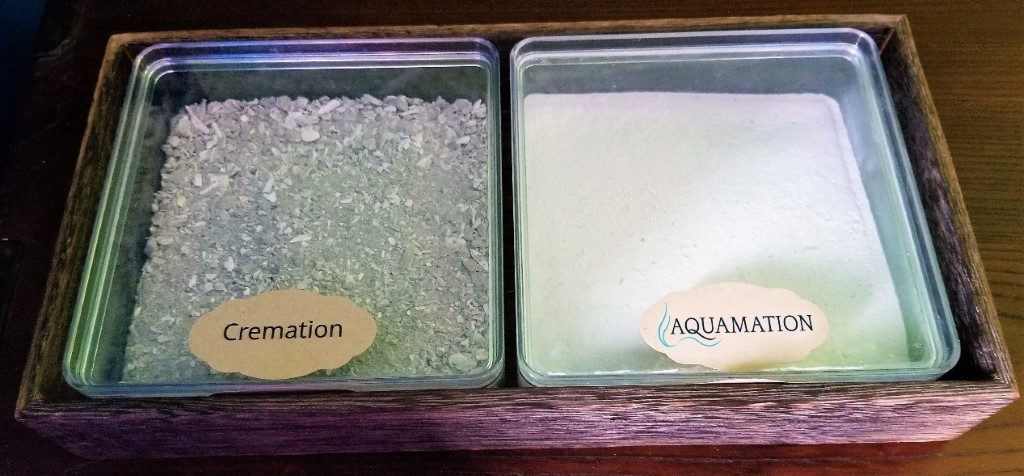Aquamation is a respectful end of life option for families.
Memorialization remains unchanged.
Loved ones still receive an urn with ashes.
Anything that can be done with cremation ashes – can be done with Aquamation ashes.
Previous slide
Next slide
Aquamation is a respectful end of life option for families.
Memorialization remains unchanged.
Loved ones still receive an urn with ashes.
Anything that can be done with cremation ashes – can be done with Aquamation ashes.
Previous slide
Next slide
Our process
The scientific name for this process is Alkaline Hydrolysis. It’s the same process that occurs as part of nature’s course when a body is laid to rest in the soil.
A combination of gentle water flow, temperature, and alkalinity are used to accelerate the breakdown of organic materials.
our impact
“Humans have a large influence on the environment, even when they are not living any more.” – E.Keijzer
Aquamation uses significantly less energy than flame cremation, but more importantly – our process does not rely on fossil fuels. Because Aquamation uses electricity, it will move into the future as our society improves infrastructure for cleaner energy sources – like wind, water, and solar energy.
Environmental impact isn’t just about energy, though. A “cradle to grave” approach must be taken in order to get a full picture of the impact our funeral technologies have on our planet. Scientists use life cycle assessment (LCAs) to assess the overall impact. Aquamation had the lowest environmental impact of all other body care options when all of the impact categories were evaluated.

Photo of cremation ashes vs Aquamation ashes







